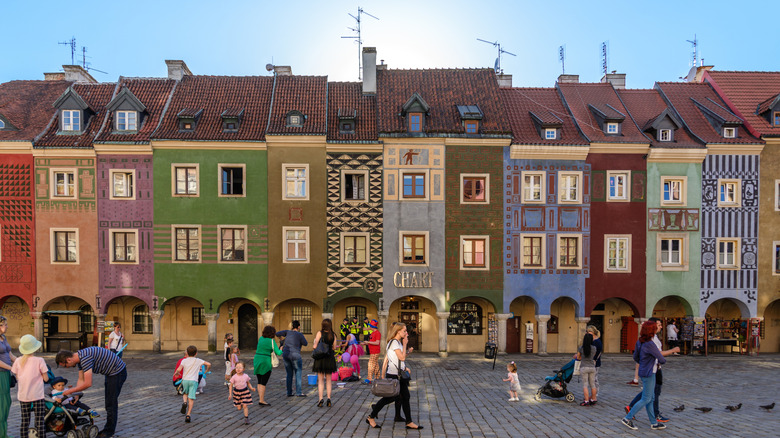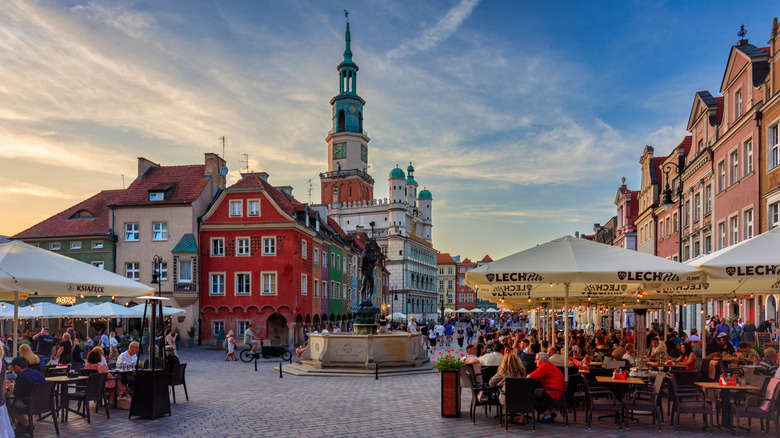Located in Western Poland, Poznań is often referred to as being the nation’s birthplace. It’s actually one of the oldest cities in Poland and dates back to the ninth century. Today, it’s home to over 25 universities, and with that many students it has a lively and modern vibe, without feeling like it’s stuck in the past. The city is home to pastel-hued town squares, nostalgic restaurants that serve up traditional dishes, and old-school Soviet-era style bars. Its culinary scene goes beyond potato-based meals, and it’s also the origin of a croissant that is so unique that it holds a special protected status.
To get here from Warsaw, high-speed trains from the capital arrive at the Poznań Główny station in about three hours. By train from Berlin, you’ll get here in about two and a half hours. Poznań’s central railway station is located near the Old Town with easy access to trams and buses for travel around the city. Alternatively, you can also take a Flixbus, the surprisingly affordable way to get from city to city in Europe.
Explore the historic squares, museums, and traditions of Poznań
Poznań’s Old Market Square is the vibrant core of the city and a perfect starting point for first-time visitors. The square is surrounded by colorful 16th-century pastel-hued merchant houses, ornate statues and water fountains, and three palaces — including the Renaissance-style Górka Palace that houses the Archaeological Museum. Every day at noon, crowds gather in the Old Market Square at the Town Hall for one of the city’s most iconic and whimsical traditions. As the clock strikes 12 p.m., a Poznań version of a cuckoo clock starts, with two mechanical billy goats emerging above the clock and butting heads twelve times. At the end, a trumpeter sounds the town’s bugle song, a ritual that has remained unchanged since the mid-1500s.
In the summer, the Old Market becomes even more lively, with many bars setting up beer gardens in the square. In June, Saint John’s Fair, the city’s oldest fair and market, which dates back to the Middle Ages, takes place here. During the fair, vendors in wooden stalls sell everything including traditional food, beers, and homemade goods.
Just a short walk from the city center is the Royal Castle. At first glance, the castle may appear older than it actually is. Throughout history, it has been rebuilt several times, most recently between 2010 and 2016. Today, it’s home to the Museum of Applied Arts, which boasts an impressive collection of furniture, ceramics, and glassware. Be sure to also check out the 140-foot tower for panoramic views of the city. For more stunning architecture and festivities, head southeast to Krakow, home to Europe’s best preserved Medieval center and best free music scenes.




